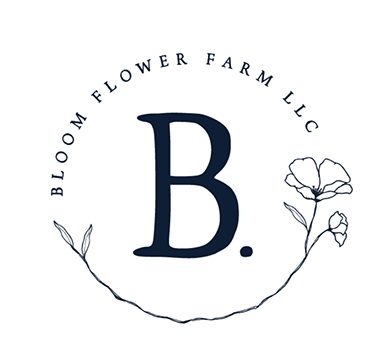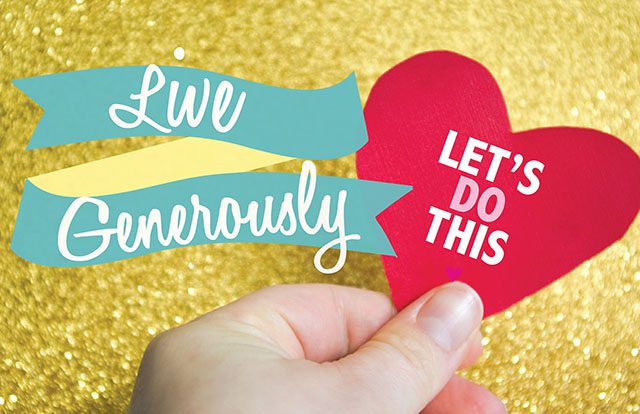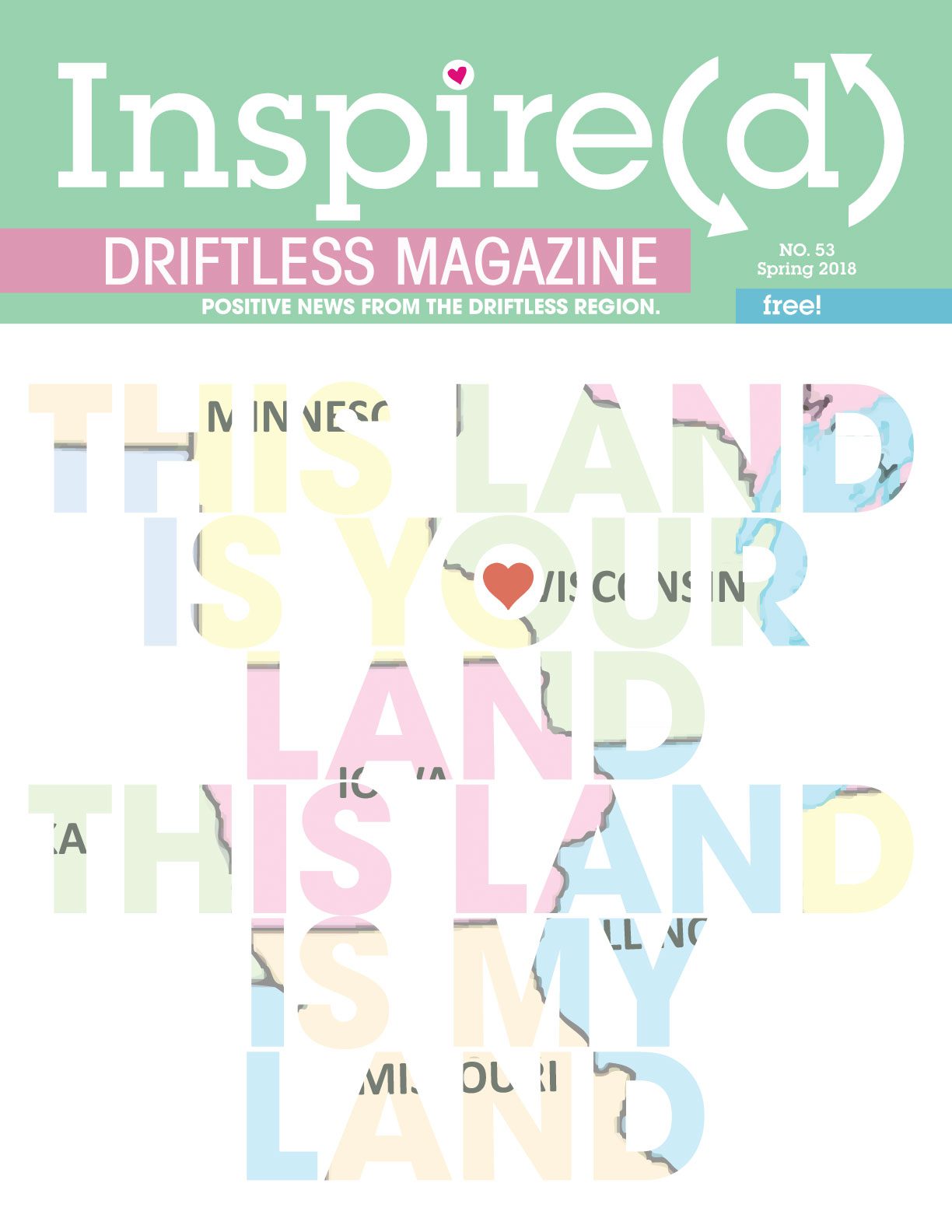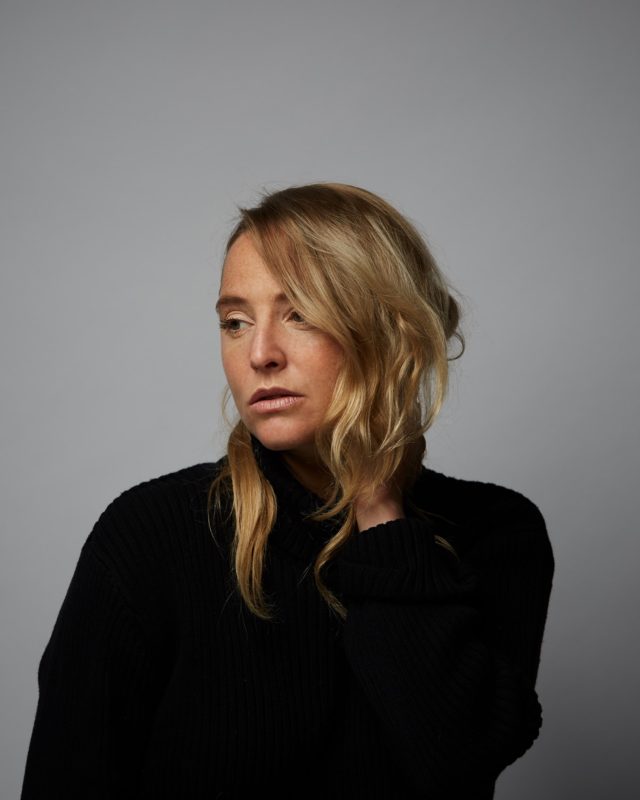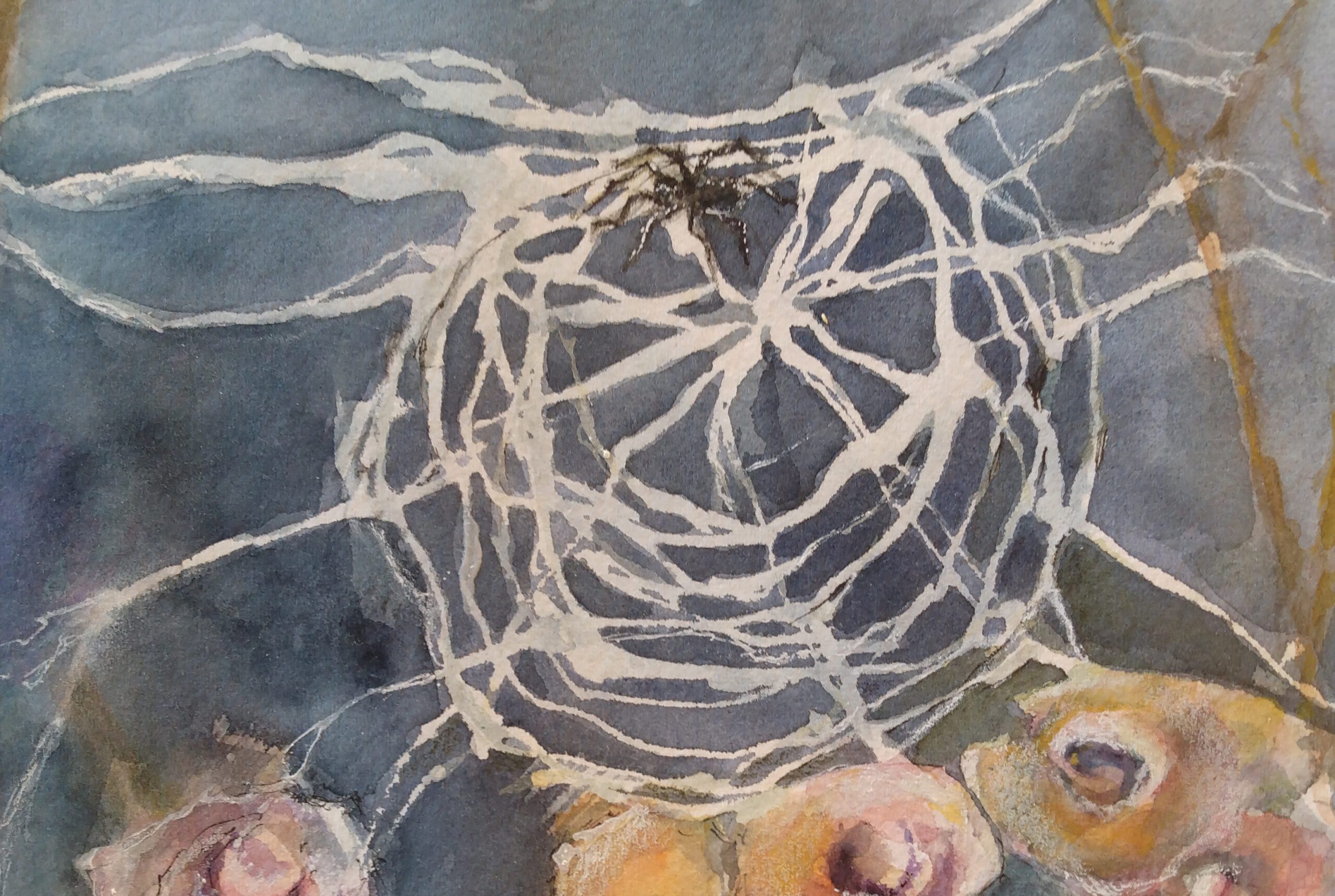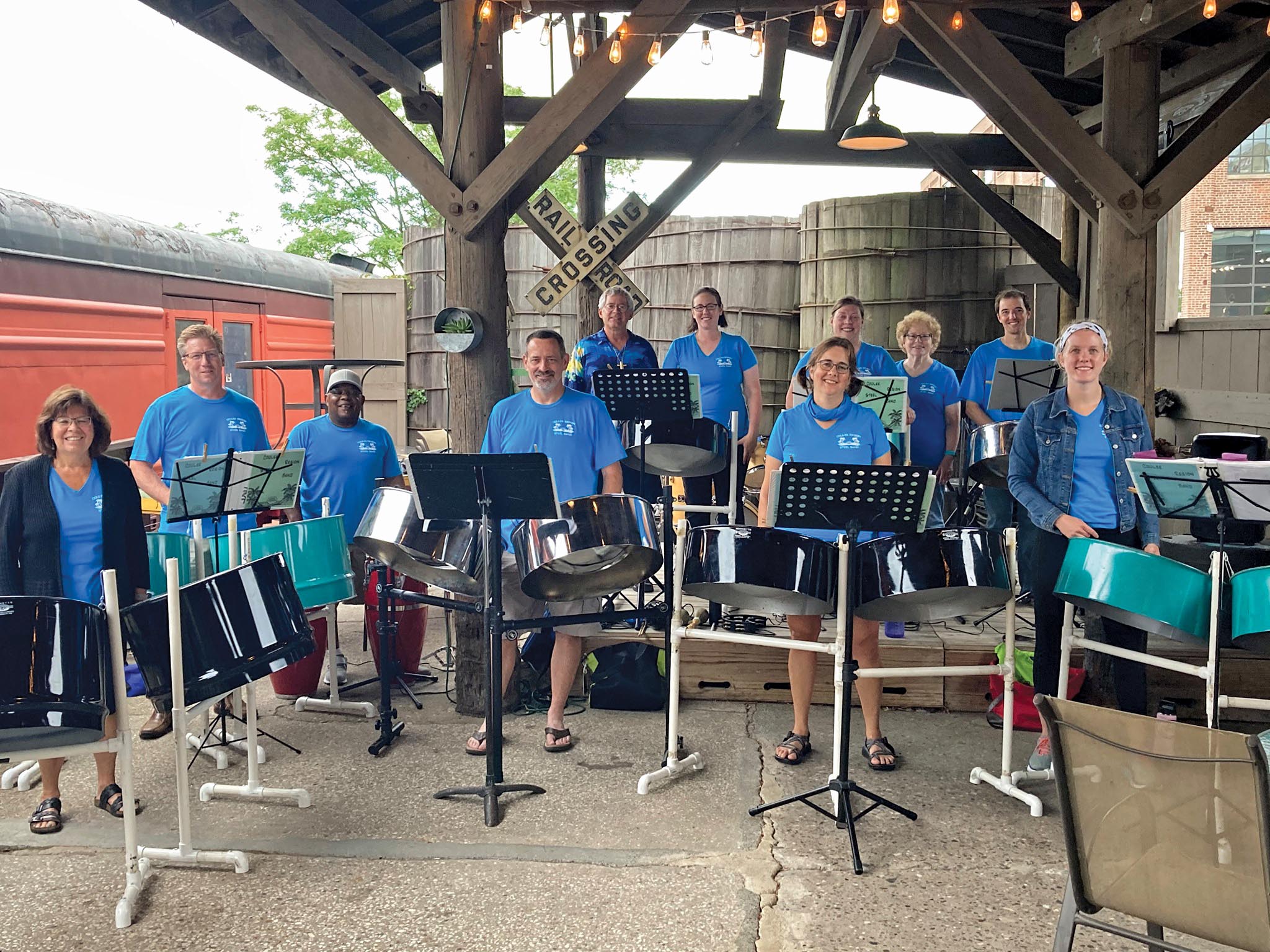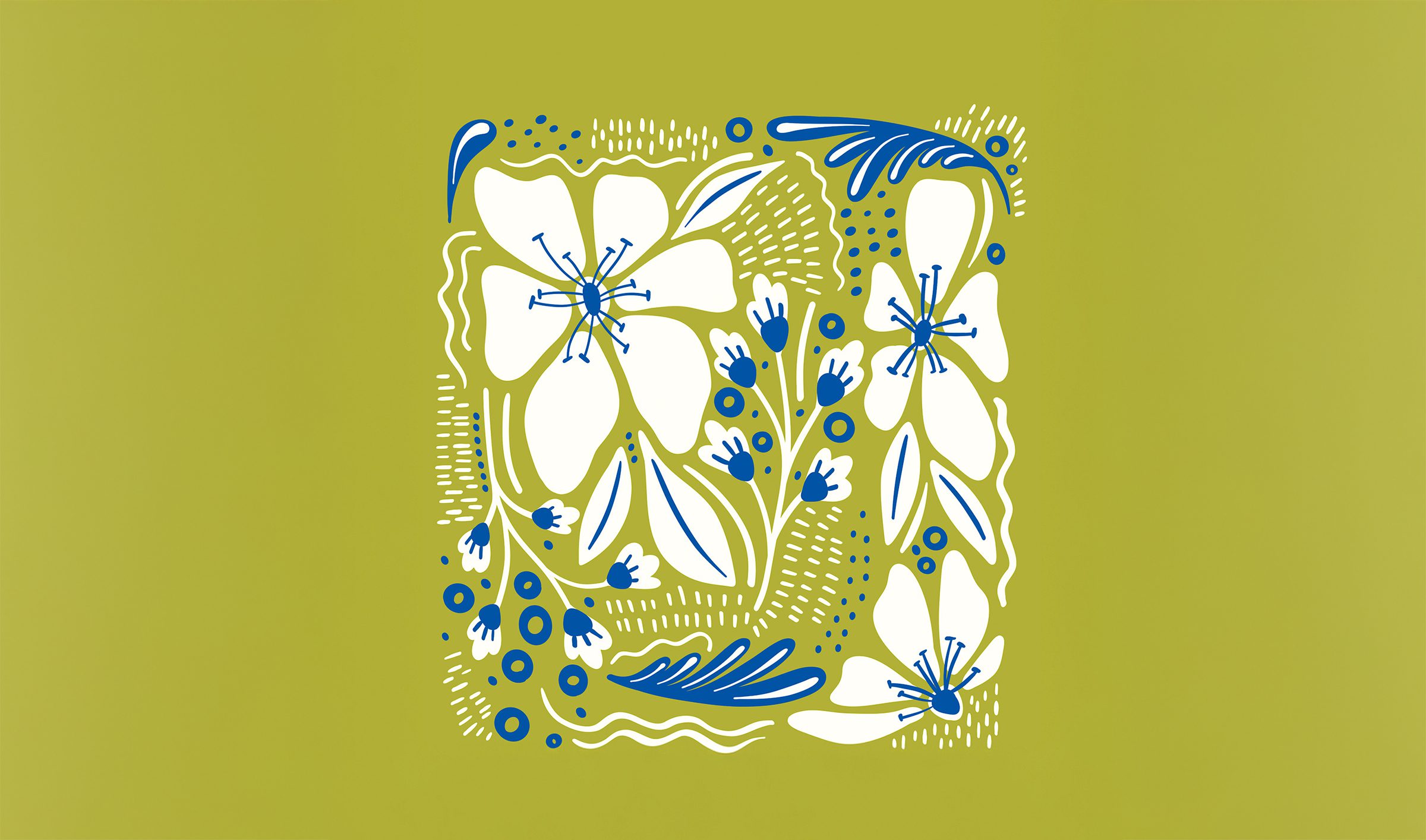Jennifer Drinkwater + The What’s Good Project
Jennifer Drinkwater describes herself as a “glass-half-empty kind of person.”
The Ames, Iowa-based artist understands how challenges can weigh on people. We all experience tough times, of course. And it’s natural to feel overwhelmed when facing news of war, natural disasters, and other negative world happenings.
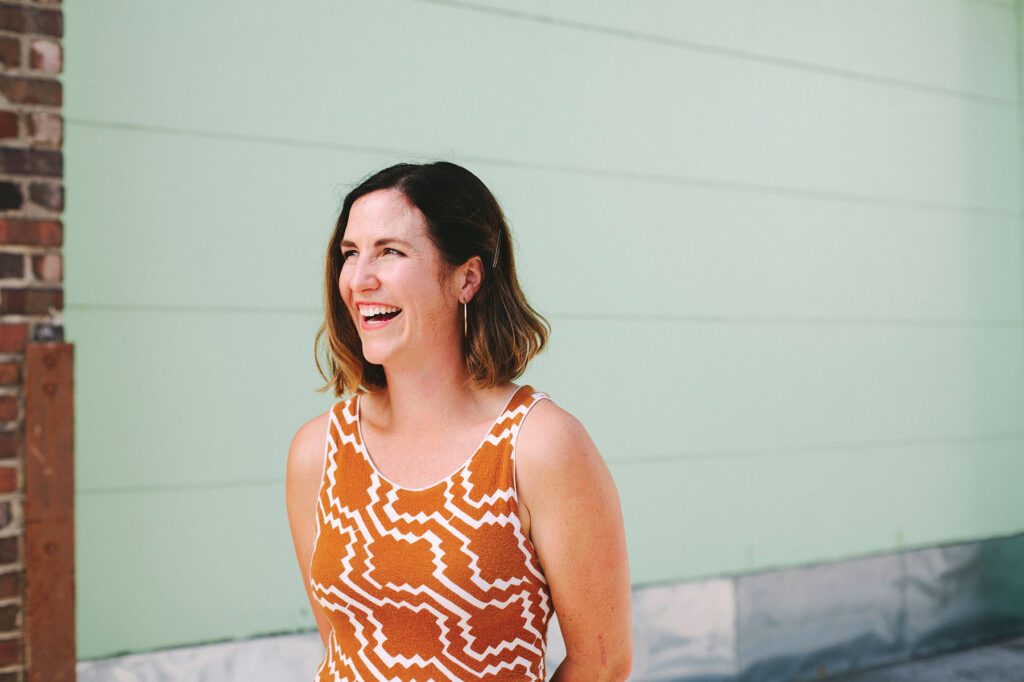
Yet despite being wired to watch for threats – “I am not an optimist by nature. I’m more of a realist,” Jennifer says – she fully appreciates the power of redirecting one’s attention. So, in 2019, she launched the What’s Good Project to help citizens recognize and celebrate the resources in their own backyards.
In participating What’s Good Project towns, Jennifer talks with residents and explores local landscapes. Then, she creates multi-layered acrylic paintings that showcase what makes each community special. The initiative mixes art and engagement.
“The What’s Good Project is inspired by the philosophy of asset-based community development. According to research, when we shift our focus from what’s wrong to what’s right, we can affect positive change where we live,” Jennifer writes on the project’s website, whatsgoodproject.com.
Creating change isn’t about overlooking problems or adopting a starry-eyed view. Instead, it starts with identifying and expanding upon what already works.
“As individuals and as small groups, people can make such a difference. They are making such a difference. But we don’t hear enough about those stories,” Jennifer says.
This July, Jennifer will share What’s Good Project stories and paintings, plus new paintings of her favorite Northeast Iowa places, during an exhibit at ArtHaus in Decorah (see sidebar below for event details).

“In 2022, my husband and I visited the Nelson Pioneer Farm in Oskaloosa, Iowa, to check out Celebrating Buxton, a fundraiser to preserve the history of Buxton, a former coal-mining town in Mahaska county. The afternoon included, among other things, a family-style soul food lunch, gospel choir performance, puppet show, history tour, and old-fashioned baseball game. It was genius. Why celebrate Buxton? Because it was a predominantly African American community from 1880 to 1920, with nearly 2700 Black Americans and 1990 white Americans and Europeans living there in 1905. Currently an Iowa ghost town, the Buxton community included Black doctors, lawyers, and business owners (and no police or city council), as well as an integrated YMCA, community pool, and the Buxton Wonders, a winning Iowa baseball team. The demise of this community, as with many others in southern Iowa, was due to a combination of factors, mainly companies exhausting the local coal supply and a decreased demand for coal.”
Sketching plans
Jennifer’s own story starts in Mississippi, where she grew up. She loved drawing and painting from an early age. She double-majored in studio art and anthropology at Tulane University and spent summers doing trail maintenance on the Appalachian Trail. After graduation, Jennifer moved to Massachusetts for a Student Conservation Association-AmeriCorps position. There, she did trail work and taught middle-school environmental classes. Soon, she got accepted into an environmental education graduate program.
Though she was passionate about nature, Jennifer wasn’t sure if teaching was the right next step. She reflected on this while doing a section hike on the Appalachian Trail.
“While I was hiking, I realized, ‘Okay, you’ve got to go paint. You’ll figure this out,’” she says.
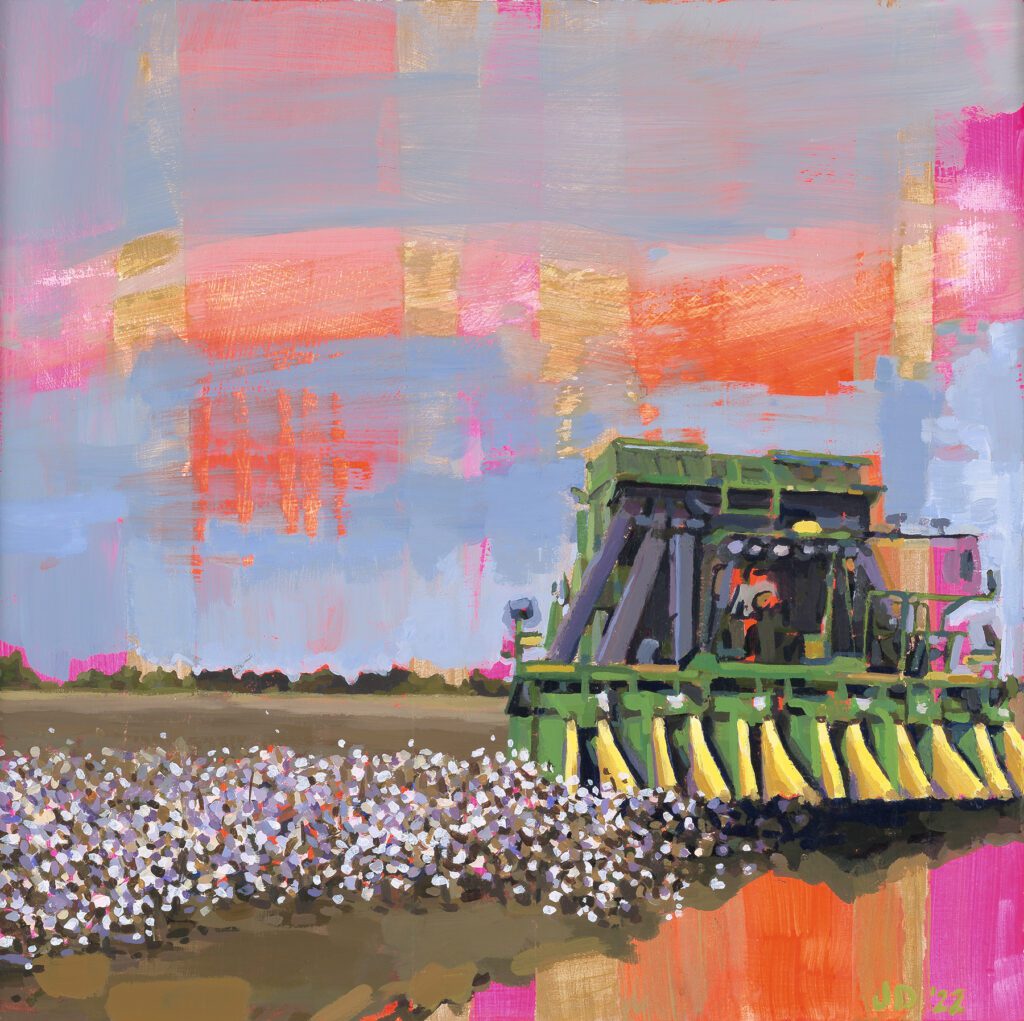
Instead of studying environmental education, Jennifer earned a Master of Fine Arts at East Carolina University. She then moved to Ames to teach drawing and painting at Iowa State University (ISU). A few years into that role, she spotted an opening for a community arts specialist with ISU Extension and Outreach. The new hire would drive community and economic development through art.
While she didn’t have a development background, Jennifer saw an opportunity to draw on her two areas of undergraduate study. She landed the job. Since 2015, she’s split her time between the ISU College of Design and ISU Extension.
Jennifer calls the mix “stupefying and magical.”
“As a younger person, there’s no way I could have designed a job that bridged cultural anthropology and art,” she says. “I always tell students, ‘Don’t compartmentalize your interests, because you don’t know how they will braid together in life.’”
Exploring ideas
For the newly created extension position, Jennifer chatted with community members and arts advocates across Iowa. Then, she started organizing interactive projects. In Perry, she helped participants enlarge and carve images from photographs onto pieces of wood. They drove a steamroller over the inked carvings to create prints. In Ames, she coordinated a yarn-bombing installation that covered a building in more than 1,200 hand-knit squares. For another Perry project, Jennifer distributed disposable cameras to fifth graders. She asked them to photograph what they loved about their town, and the images anchored a large-scale photo mural.
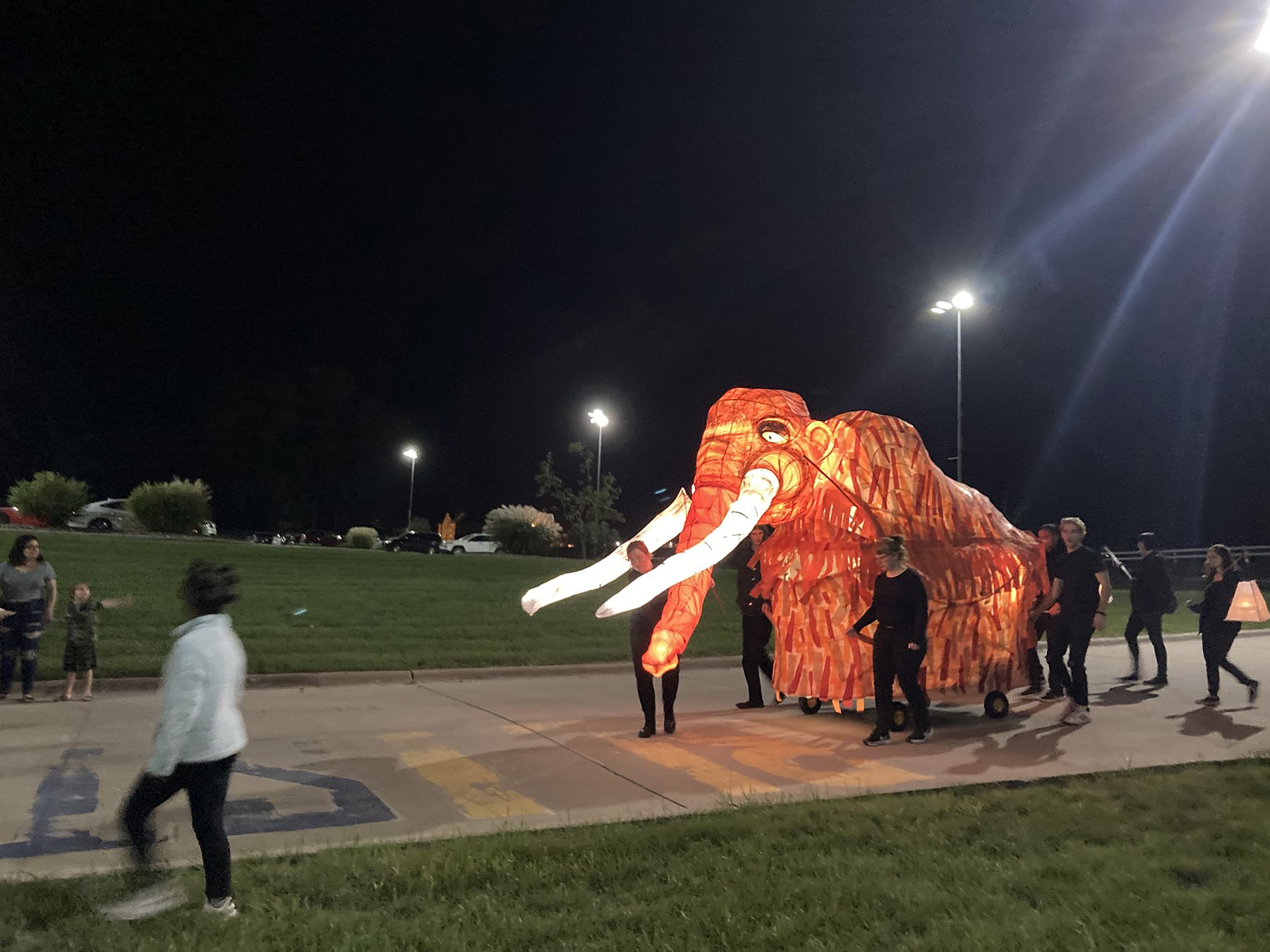

People started asking Jennifer how to organize their own events. To share ideas and spark creativity, she published several free, downloadable tool kits on the What’s Good Project website. (Some are also available through the Iowa Arts Council and ISU Extension.) The kits contain step-by-step instructions for starting community projects. Each covers topics like site considerations, budgeting, funding, engagement, and evaluations.
Jennifer’s first tool kit tackled murals. She based a yarn-bombing tool kit on her experience in Ames, and it’s been a popular, less-permanent alternative to murals. Another kit outlines how to stage pop-up events and exhibitions. And the most downloaded release, a plan-of-work tool kit helpful for individual artists and community groups alike, provides practical guidance for brainstorming, setting goals, and collaborating on creative projects.
The tool kits highlight both nuts-and-bolts basics and project benefits. Jennifer has seen installations that showcase unique assets, honor local history, and engage an assortment of community members.
“There’s an acronym that we use in extension: STP, or the ‘same ten people.’ It makes me laugh, but there’s truth in it. When communities get the same volunteers, it’s easy to forget there are all these other people with talents and skills and interests,” she says. “Art becomes a way of engaging with different people, or more introverted people, or more creative people. It becomes an easy way of getting to know somebody without having a focus group or serious meeting. You can sit around and knit together and build friendships under the guise of something totally different.”
Establishing the What’s Good Project
Three years after she started the ISU Extension job, Jennifer took an arts business class. One assignment involved explaining the “why” behind her creative work.
“I’ve written artist statements my entire life. But this was about figuring out, at the core, what is your value system? How do you recognize yourself as an artist? What does your work communicate?” she says.
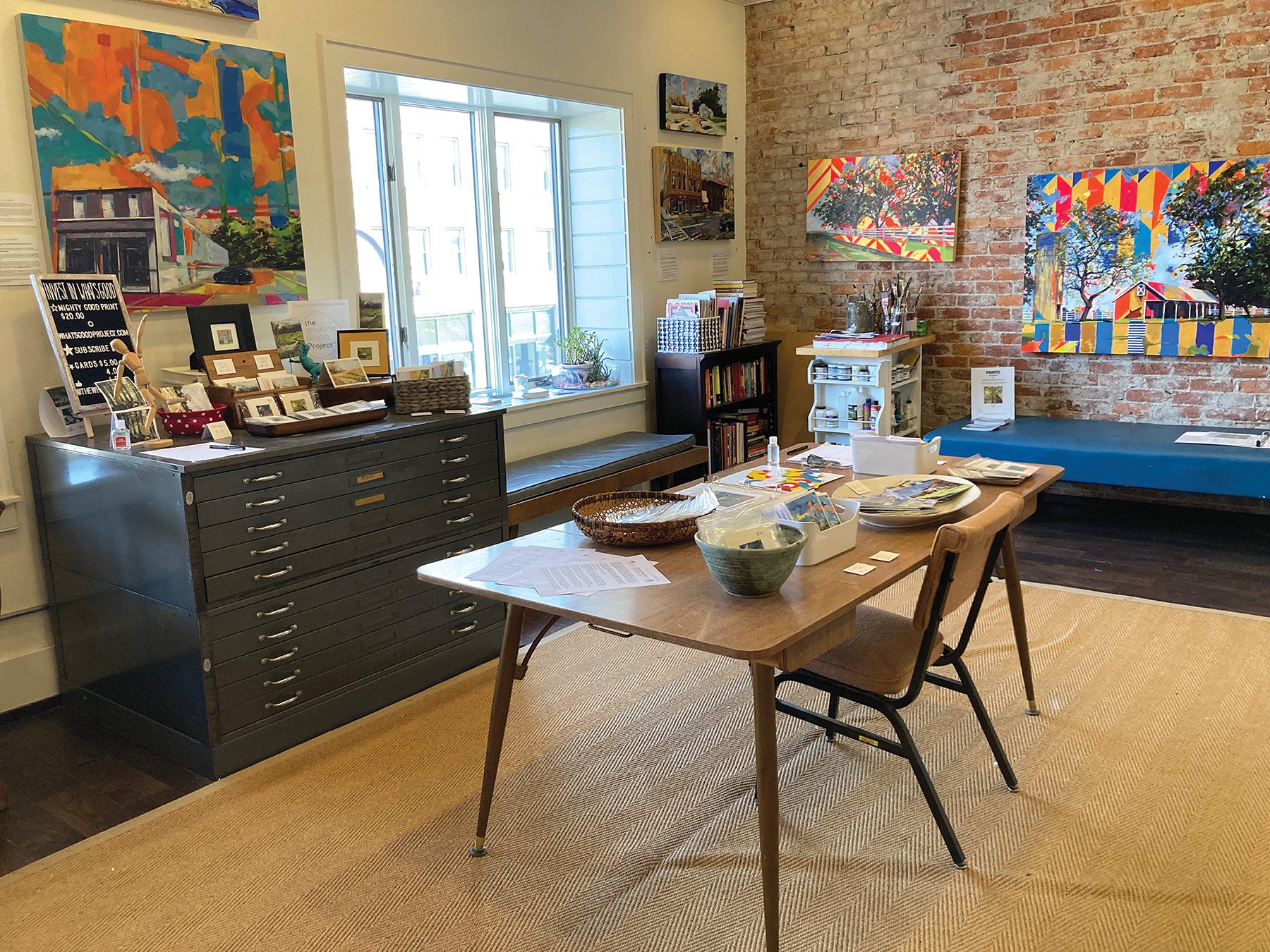
After reviewing her wide-ranging projects, she discovered a common thread.
“I’m not somebody who is self-expressive in my painting. I don’t paint my story, but I love other people’s stories,” Jennifer says. “I started thinking, ‘What if I was more deliberate about it?’”
That lightbulb moment led to the What’s Good Project. Working in Iowa and Mississippi, Jennifer visits small towns and talks with locals. She attends major events. She studies an area’s history. She spends time at parks, cafes, shops, and attractions. Jennifer then documents a community’s treasured places and prized features in vibrant paintings, layering images of structures and scenery atop bright, underlying patterns.
The goal is to highlight the positive and help other communities build momentum by sharing what works.
Sales of original What’s Good Project paintings and prints raise money for nonprofits in participating towns – about $16,000 and counting since 2019. Some images get used in visitor guides or advertisements. Jennifer also creates postcards from various paintings. Twice a year, her email newsletter subscribers receive a hand-written postcard that shares the story behind an image.
Making a difference
What’s Good Project art spotlights a town’s attributes, while also helping residents see their surroundings in a new way.
“Jennifer’s paintings were an awakening to a lot of people living here,” says Velma Benson-Wilson, the economic and tourism director for Quitman County, Mississippi.
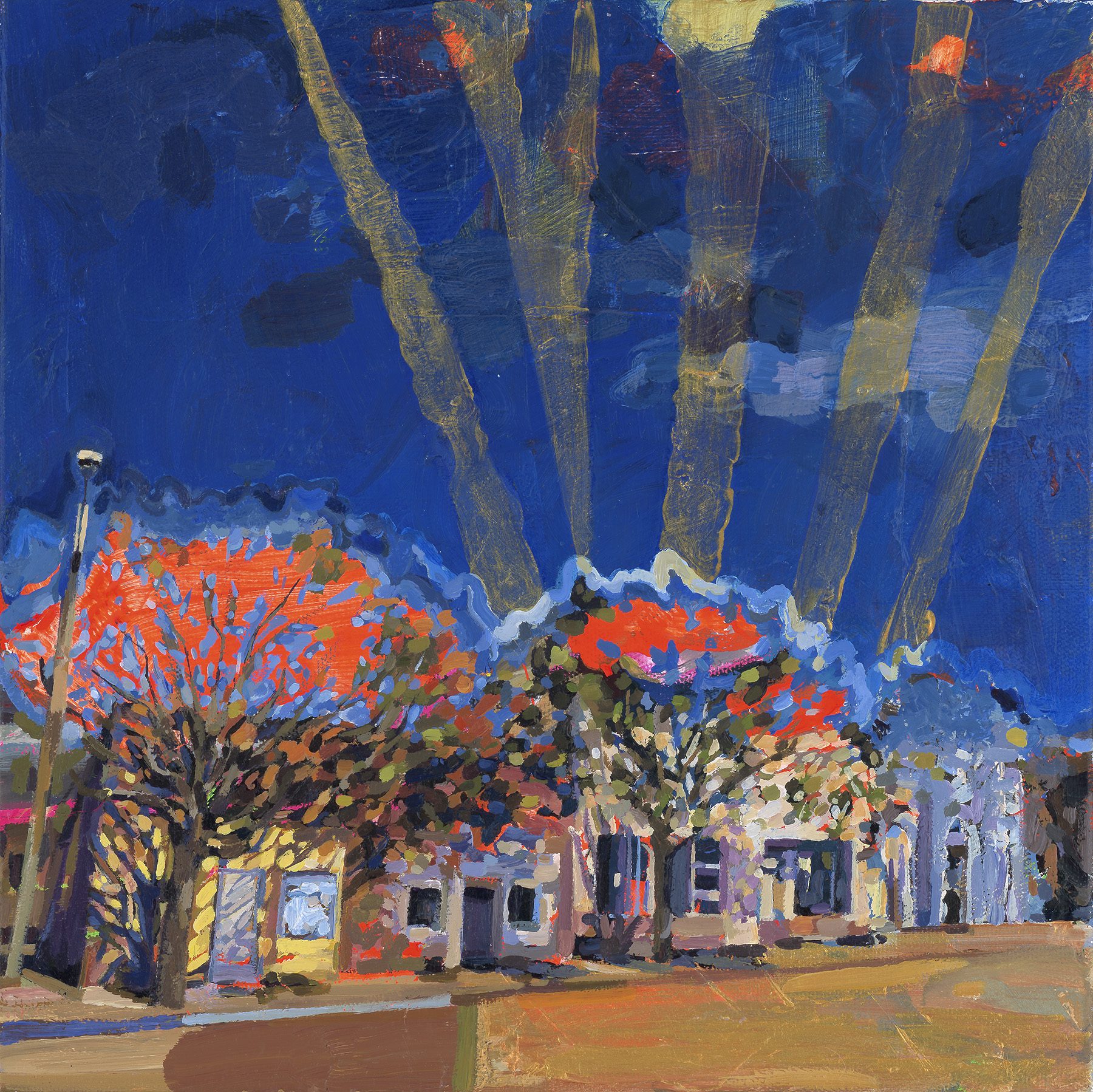
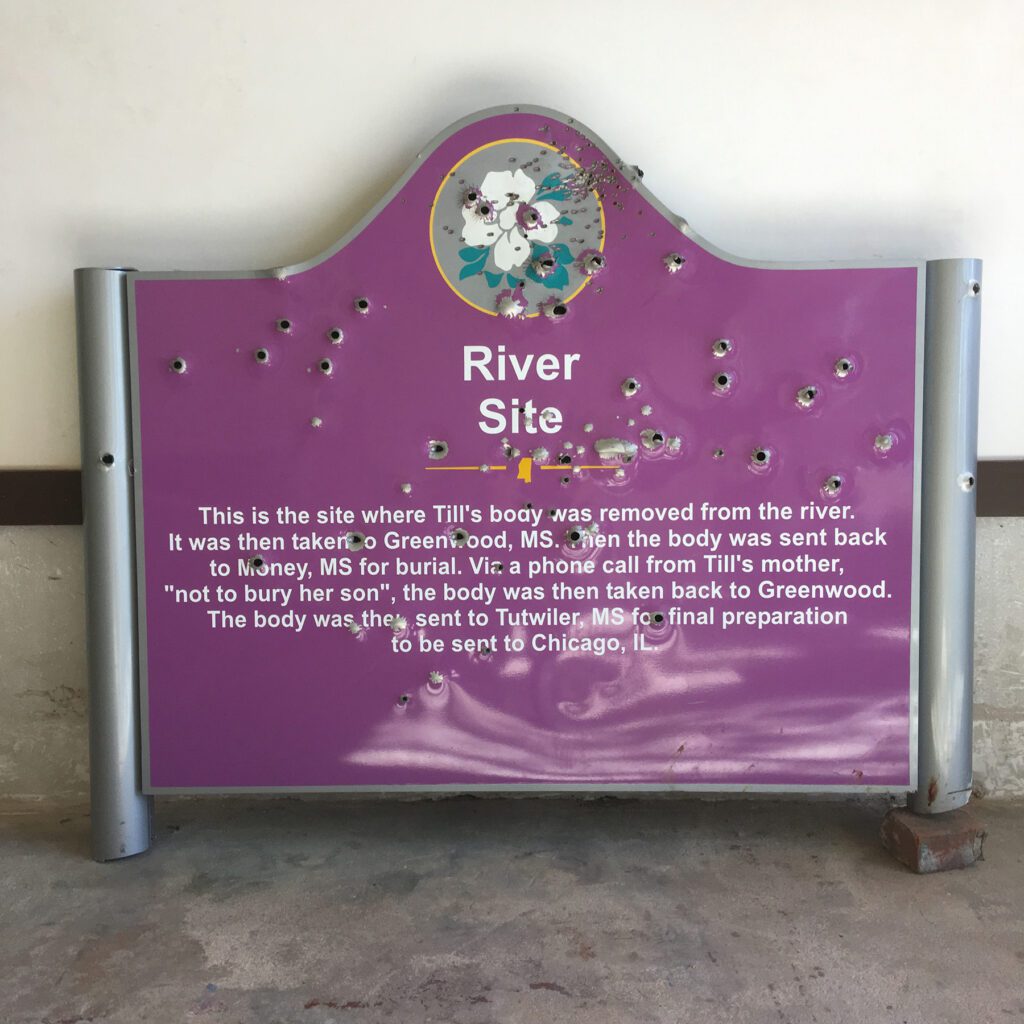
The birthplace of singer Charley Pride, Quitman County has deep musical roots, historic Native American sites, and a storied civil rights legacy. Dr. Martin Luther King, Jr., visited the Mississippi Delta community in early 1968, when Quitman was the nation’s poorest county. The poverty he saw in the county seat of Marks cemented the small town’s significance in King’s Poor People’s Campaign for economic justice.
While poverty still impacts the area, Quitman County has cultural and recreational riches. The What’s Good Project encouraged community members to embrace those treasures.
“Sometimes you don’t appreciate what you’ve got until you see it in a different light. Jennifer brought awareness to the assets that we have and how we can take advantage of them,” Velma says.
A similar thing happened after Jennifer painted scenes in the southern Iowa town of Oskaloosa.
“You see people really study and consider the paintings. They look at these places that they see every day through a different lens. It creates a different appreciation for where you are,” says Allison McGuire, who leads community engagement and education at Oskaloosa’s George Daily Community Auditorium.
Allison and her husband, Andy, who is the auditorium’s executive director, invited Jennifer to bring the What’s Good Project to Oskaloosa. After kicking things off with conversations at the town’s 2021 Art on the Square festival, Jennifer interviewed more than a dozen residents. Those discussions informed 15 related paintings. Subjects range from Maskunky Marsh, a local birdwatching hotspot, to Penn Central Mall’s center court, a popular community gathering space.
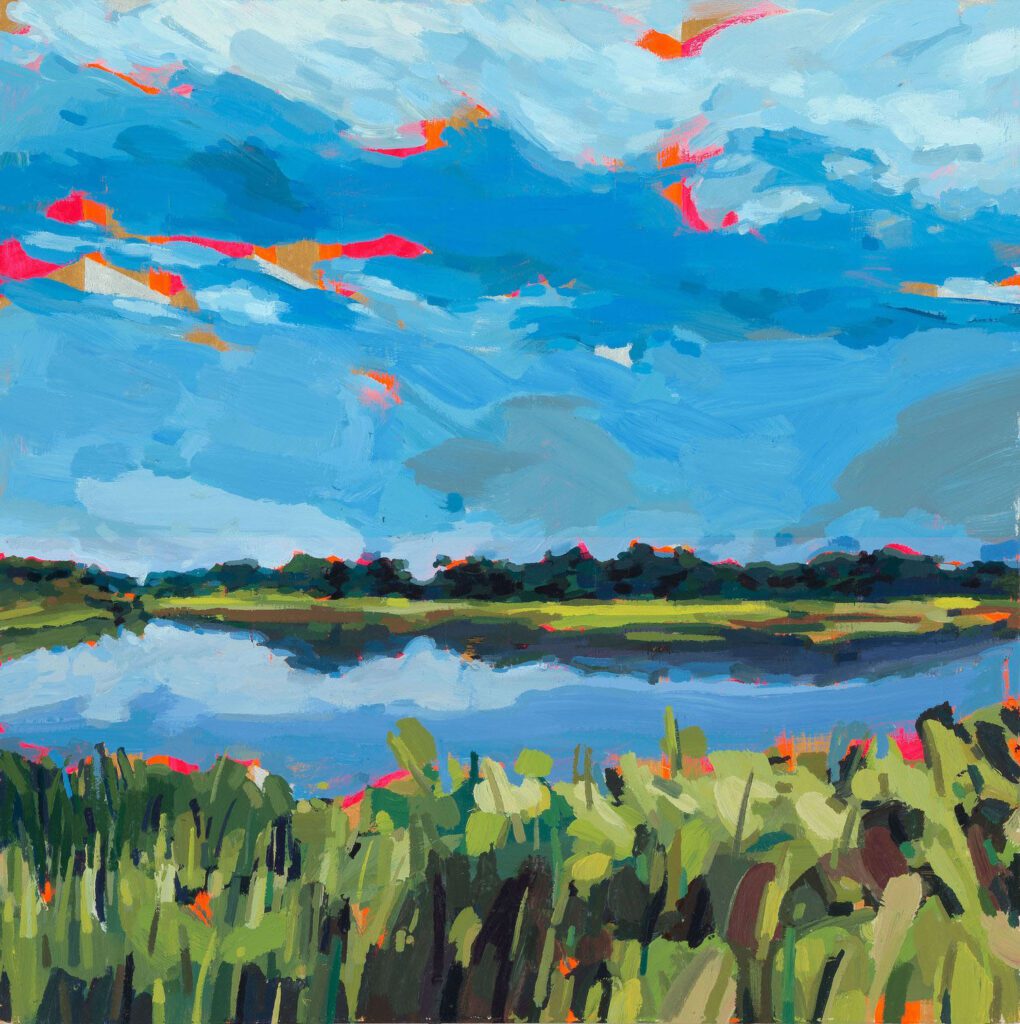
The paintings were unveiled during Art on the Square in 2023. Descriptions accompanying each image talked not about the painting process or style of work, but the stories behind each piece.
“It has nothing to do with the artist or the art. It has everything to do with the people that inspired it. You’re hearing from students and longtime community elders and people who just moved, and they all tell stories of what’s important here,” Andy says.
This work has changed Jennifer’s whole outlook on life.
“I feel like it’s made me a better person. It’s made me a lighter person. I do feel different, having talked to all these people. I know more about their sacrifices. I hear what they believe in and how hard they are working to really make their small towns better,” Jennifer says.
The stories, and the people behind them, can transform whole communities.
“There’s research to back this up,” Jennifer says. “I’m meeting people in these tiny towns in Mississippi and Iowa who have no idea what asset-based community development is, but they’re doing it. Things are improving, and things are working, and people are excited because there’s momentum. There’s joy. You can see it in action.”
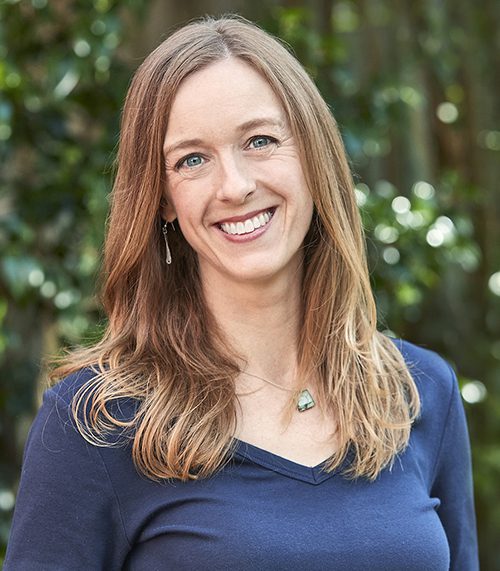
Renee Brincks

Meet Jennifer & View the What’s Good Project
To see Jennifer Drinkwater’s work, including What’s Good Project images and paintings of places she likes to visit in the Driftless, swing by ArtHaus (107 W. Broadway, Decorah) between July 5 and 27. Jennifer will greet guests during the exhibit’s opening reception on Friday, July 5, from 7 to 9 pm.
For additional What’s Good Project information, and to join Jennifer’s postcard list, visit whatsgoodproject.com.




